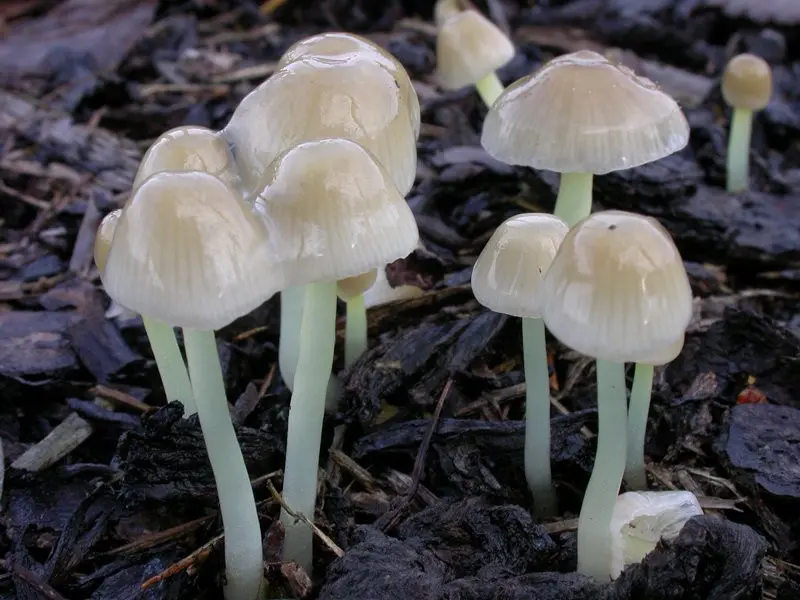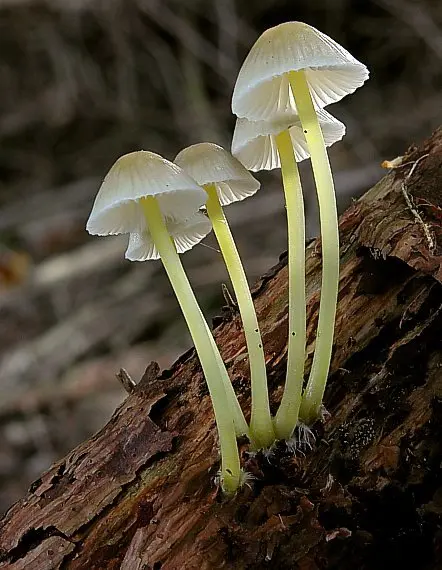Mycena mucosa (Mycena epipterygia)
- Division: Basidiomycota (Basidiomycetes)
- Subdivision: Agaricomycotina (Agaricomycetes)
- Class: Agaricomycetes (Agaricomycetes)
- Subclass: Agaricomycetidae (Agaricomycetes)
- Order: Agaricales (Agaric or Lamellar)
- Family: Mycenaceae (Mycenaceae)
- Genus: Mycena
- Type: Mycena epipterygia (Mycena mucous)
- Mycena lemon yellow
- Mycena sticky
- Mycena slippery
- Mycena slippery
- Mycena citrinella

Mycena epipterygia is a small mushroom belonging to the Mycena family. Because of the slimy and unpleasant surface of the fruiting body, this type of fungus is also called slippery mycena, a synonym for the name of which is Mycena citrinella (Pers.) Quel.
Recognizing lemon yellow mycena (Mycena epipterygia) will not be difficult even for an inexperienced mushroom picker. Her hat has a grayish-smoky hue and a mucous surface. The leg of this mushroom is also covered with a layer of mucus, but it has a lemon-yellow color different from the cap and a small thickness.
The diameter of the cap of lemon yellow mycena is 1-1.8 cm. In immature fruiting bodies, the shape of the cap varies from hemispherical to convex. The edges of the cap are ribbed, with a sticky layer, characterized by a whitish-yellow tint, sometimes turning into a gray-brown or grayish color. Mushroom plates are characterized by small thickness, whitish color and rare location.
The leg in its lower part has a slight pubescence, lemon-yellow color and a surface covered with a layer of mucus. Its length is 5-8 cm, and the thickness is from 0.6 to 2 mm. Mushroom spores are elliptical in shape, smooth surface, colorless. Their dimensions are 8-12*4-6 microns.

Active fruiting of lemon-yellow mycena begins at the end of summer, and continues throughout the autumn (from September to November). You can see this mushroom in deciduous and coniferous forests. Lemon-yellow mycenae grow well on mossy surfaces, in mixed forests, on fallen needles of coniferous trees or last year’s fallen leaves, old grass.
Mycena epipterygia is not suitable for cooking because it is small. True, this fungus does not contain toxic components that could cause significant harm to human health.
There are species of fungi similar to the mucous mycena, which also have a yellow leg, but at the same time grow only on wood of different species (mainly coniferous) and on old stumps. Among these fungi is Mycena Viscosa.









